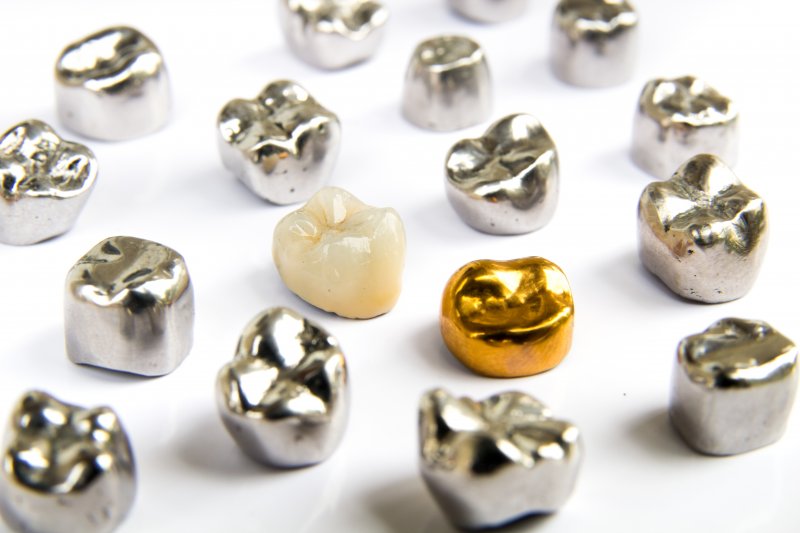
There’s no question about it: dental crowns are incredibly versatile dental devices that work to restore damaged teeth in the long-term. But did you know that crowns have been made from a wide variety of materials over many years? It’s amazing how they can save otherwise unsalvageable teeth, but this is only possible if they’re made from the right materials and with the right expertise.
To learn how a dental crown in Lincoln is made and the most common materials you would find in a typical dental practice, keep reading!
Common Materials Used for Dental Crowns
If you’ve had crowns placed before, then you may already be aware of it’s most well-known material: silver. Silver crowns are actually made up of several different base alloys, including nickel, tin and copper. The reason dentists use this metal is because of it’s high resistance to corrosion, making it a very durable material. Crowns can also be made from gold, which also utilize copper and other metals.
While these base metal alloys were considered the standard in dentistry for a long time, advancements have made it easier to meet the preferences of patients. For example, ceramic crowns, which utilize porcelain, allow for effective long-term protection without the use of metal materials. These crowns may be requested either for aesthetic reasons or because of metal allergies.
Those looking for the best of both worlds can also take advantage of porcelain-fused-to-metal crowns. This combines the long-term durability of silver crowns with the aesthetic appeal of porcelain crowns.
How are Crowns Made?
Before a crown can be made, the dentist will need to examine your tooth and remove any decay that’s present. Then, they’ll remove a small amount of enamel in order to make room for the crown itself. After the tooth is properly prepared, they can take an impression of your tooth and send that mold to a dental lab offsite. In about two weeks, your permanent restoration will be created.
During this period, you’ll wear a temporary crown to protect your damaged tooth from bacteria exposure. When your permanent crown is fitted, the dentist will make sure that the crown fully covers the damaged tooth and that your bite remains even.
When is a Crown Needed?
A crown is typically needed when a dental filling isn’t sufficient. The general rule-of-thumb is if a dental filling takes up more than two-thirds of the natural tooth, a crown must be used instead. If your tooth is damaged as a result of decay, trauma or because it needs to be restored after a root canal, a crown can help you avoid an extraction. The type of material you use depends on your preference, but the dentist will make sure to give their professional opinion first so you can prevent future issues.
If you have a damaged tooth, don’t hesitate to contact a dentist in Lincoln for all your restorative needs!
About the Author
Dr. Amy Wenninghoff does everything she can to restore teeth while keeping a minimally-invasive approach in mind. If you need a dental crown, you can expect her to only use the highest quality materials possible. With five locations in Lincoln, you’re bound to find a Williamsburg Dental location nearby. To schedule an appointment for you or your child, call (402) 420-2222 or click here.
